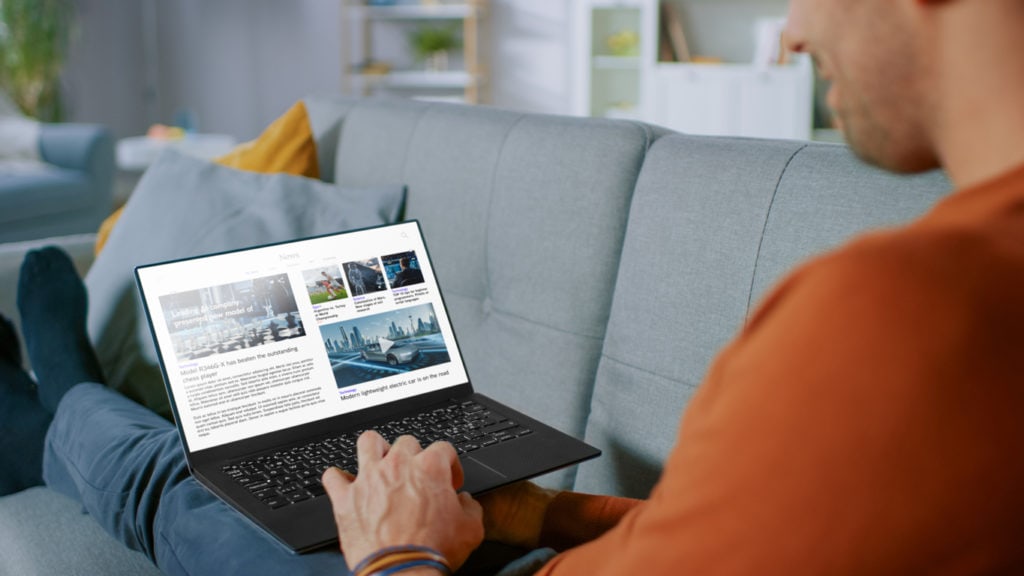
Industry Insights
Native Video Advertising: The Best Strategy You’re Not Using
How is your organization spending its marketing budget?
If you’re like many other firms, you’ll recognize two trends: a shrinking marketing budget and a near-total shift to digital. According to Gartner’s Annual CMO Spend Survey, marketing budgets have been squeezed across industries, even in consumer products. And over 70% percent of the money that is spent on marketing is invested entirely in digital: website, email, digital ads and social media.
One of the fastest-growing segments is native video advertising. And there are plenty of reasons why native video may just be the best strategy you’re not using.
What is Native Video Advertising?
You could say that native video ads are ads that don’t look like ads. They’re short, sponsored videos meant to fit seamlessly into a user’s viewing experience.
Native advertising is the placement of brand-building content into your organic strategy. Native video ads might live on your social networks, on your website or on any other owned platform. Typically, they fit right in with existing visual content on the page, they’re well-assimilated into the design and they’re consistent enough to be nondisruptive.
And that’s what makes them so attractive. They’re not disrupting a user’s experience; they’re enhancing it. Examples of native video advertising include promoted search result videos and sponsored social media posts. Expected to reach over $400 billion in annual revenue by 2025, these ads work precisely because they don’t look like traditional forms of advertising. They’re not irritating pop-ups, and they don’t include hard sells. Instead, native video is similar to the articles and other pieces of content around it. These ads fit seamlessly into your clients’ news feed algorithm and reach them when they’re already engaged.
Native Video Advertising Works Better than Pre Roll Video Ads
You’ve undoubtedly had this experience: you open a website because you need information. Before you can get that information, however, you’re assaulted with an in-your-face banner ad or a video you can’t turn off.
That’s the big difference between pre-roll video ads and native video advertising. Pre-roll ads don’t give online users a choice. These videos are blatantly promotional and block the content internet users actually want to look at. Users are held hostage to the video before they can move on. Native videos do give consumers a choice. Users can simply keep on scrolling, without disruption, or they can click through the video ad if it catches their eye.

It’s easy to understand why many people actively block banner ads or click away from pre-roll content. Native video ads, however, have a better chance of getting through to target audiences. After all, audiences are watching more digital video content than ever. Recent statistics show that 54% of respondents regularly use their smartphones to watch online videos. And if a native video ad is informative, entertaining and a lot like what users are already viewing online, it’s got a great chance of appealing to your target audience.
It’s No Wonder More Companies are Taking Advantage of Native Video Advertising on Social Media
Social media networks are great places for native ad content, primarily because your customers (70% of them) are already using social platforms. Popular sites and apps for native video ads include Facebook, Twitter, Instagram, Pinterest, YouTube, and TikTok. These platforms allow you to target your desired audience and connect with them without doing any hard selling.
As your target customers get savvier and more resistant to traditional advertising, it makes sense to back off from heavily promotional content in favor of in-feed ads they’ll actually care about. The proof is in how many brands are putting more of their ad spend towards content marketing and ad formats that don’t aggressively sell to users. According to recent estimates, native advertising revenue will increase by 46% this year.
So, how do you start producing native video content that will be a hit with your target audience?
Your 5 Best Practices for Effective Native Video Ads
We have some experience in this area. Here’s what we recommend:
1. Post your promoted videos on the right channels.
Of course, branded messages will always perform better when served to audiences in the channels they prefer. Remember that the whole point of native ads is to mirror the design or content of the platform they’re in. Native video ads should look like the kind of videos social media users are already watching in TikTok or on Facebook. So, consider where your target customers are already spending their time, and then develop native video content that reflects that platform.
2. Utilize targeting and analytics on the platforms you use.
Different platforms have different targeting and reporting capabilities. Get to know them and make use of them when you post native video ads. If you can identify specific demographics or use lookalike targeting for Facebook native videos, for instance, be sure you’re considering that information as you plan and place your native ads. This will boost your engagement rate and your return on ad spend (ROAS).
Also, make sure you’re analyzing the data social media platforms provide, such as video views and video play clicks. No ad campaign is complete without analytics that tell you exactly how your ads performed—and what you should do differently next time. For example, if your data for a Facebook native video shows that users stopped watching the video after 13 seconds, you may need to reconsider what happens in the video around that point or think about why the audiences you’re targeting are dropping off at that time mark.
3. Tell a story that connects with viewers on an emotional level.
Remember, you’re not blatantly selling with these ads, you’re trying to connect on a deeper level. To do that effectively, you should rely on narrative and imagery that evokes a certain emotion in your viewers. Ideally, your native videos should resonate with your customers’ real, lived experiences. There are lots of ways to achieve this: through voice-over narration, camera movement, music, color choices, and anything else that adds to a particular mood. A great video production company (okay, time to brag. That’s us!) can help you. Here’s an example of a video ad that appeals to all the dads out there:
4. Prioritize mobile devices as you produce native video ads.
We can’t emphasize this enough: make sure the videos you produce are optimized for mobile. This is what the majority of your audience, over 70% of Gen Z and millennial consumers, are using to watch your content. As you create product videos, for example, think about how they’ll be watched—vertically or horizontally—and what you can do to make products appear larger in video ads. Also, make sure your video can still be effective without sound. Some viewers prefer not to activate sound when they watch short videos.
5. Keep your ads short.
The best ads, like the best speeches, are kept short. So try to keep your native video ads short and punchy to encourage more engagement. Be sure to check the length recommendations for the platforms you use, and post content appropriate to different social media channels, as well. Depending on your content and your reach, a 15-second Facebook video ad can be just as effective as a longer commercial.
6. Make your video ads accessible to a wide audience.
Include captions to make your videos easily accessible. Web users who have hearing impairments will appreciate the visual context in their in-feed video ads.
Spot Content Studio can Help You Create Top-Notch Visual Content for Your Sponsored Posts
Your audience doesn’t want a hard sell. They want a short branded video that will make them chuckle, or feel nostalgic, or get inspired. That’s what the best native videos do. Spot Content Studio can help you produce them.
